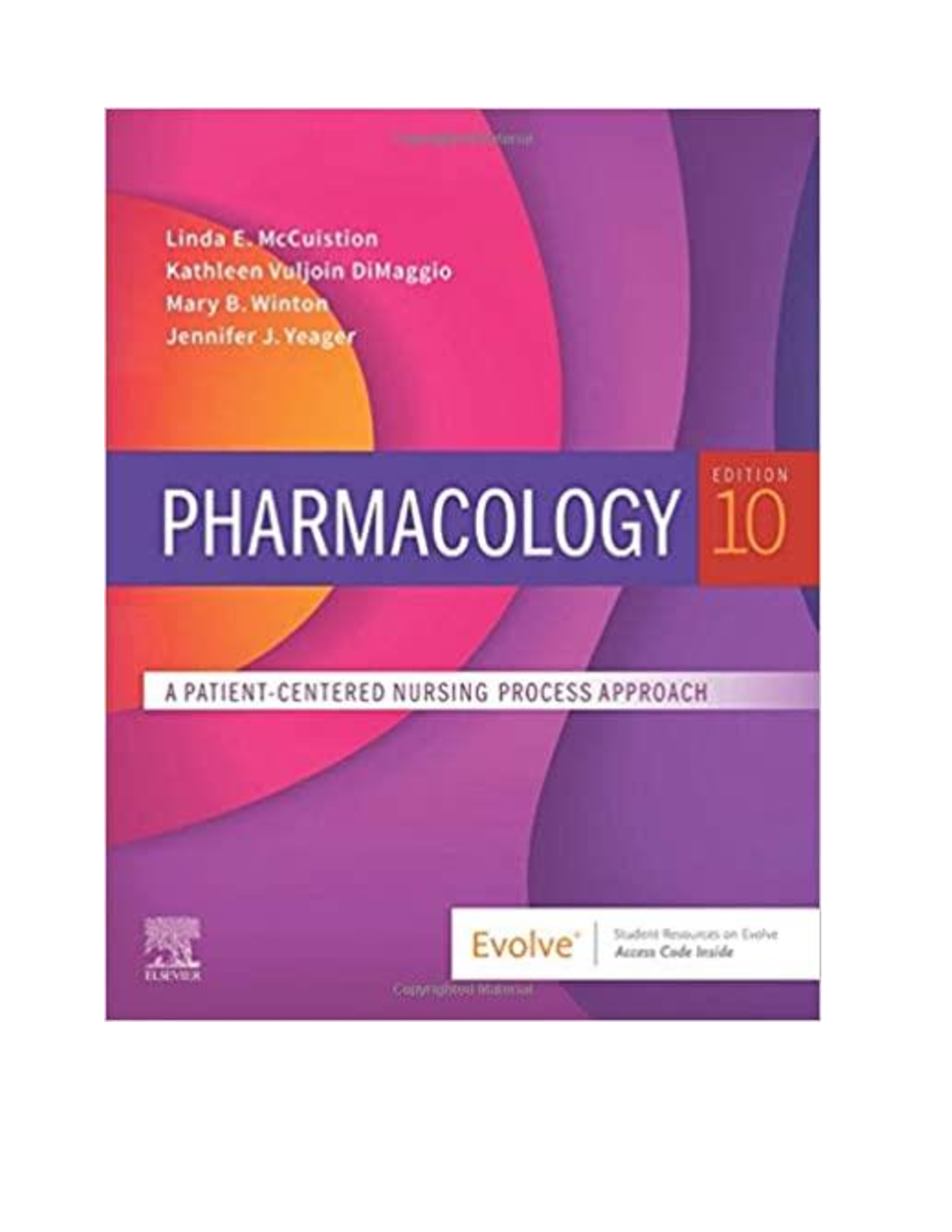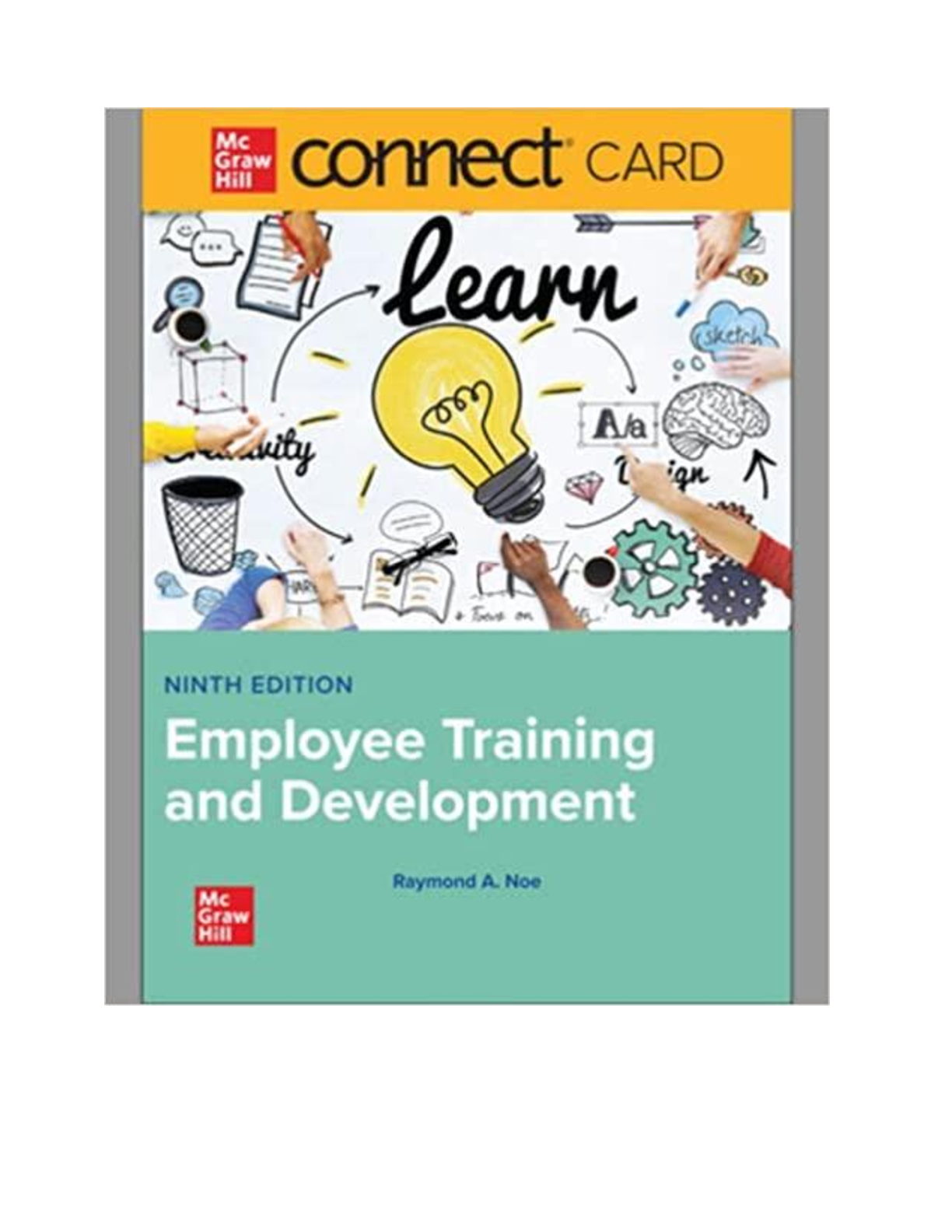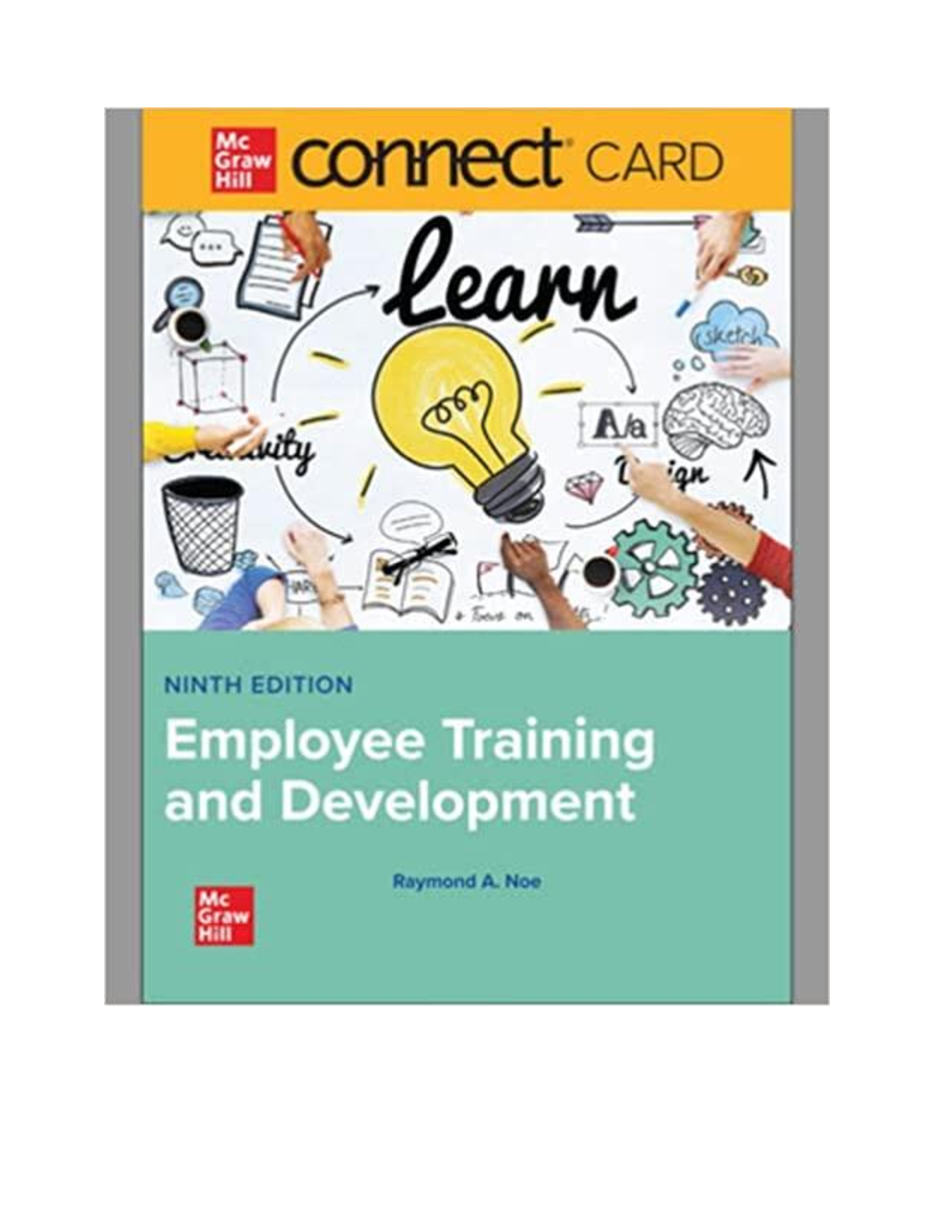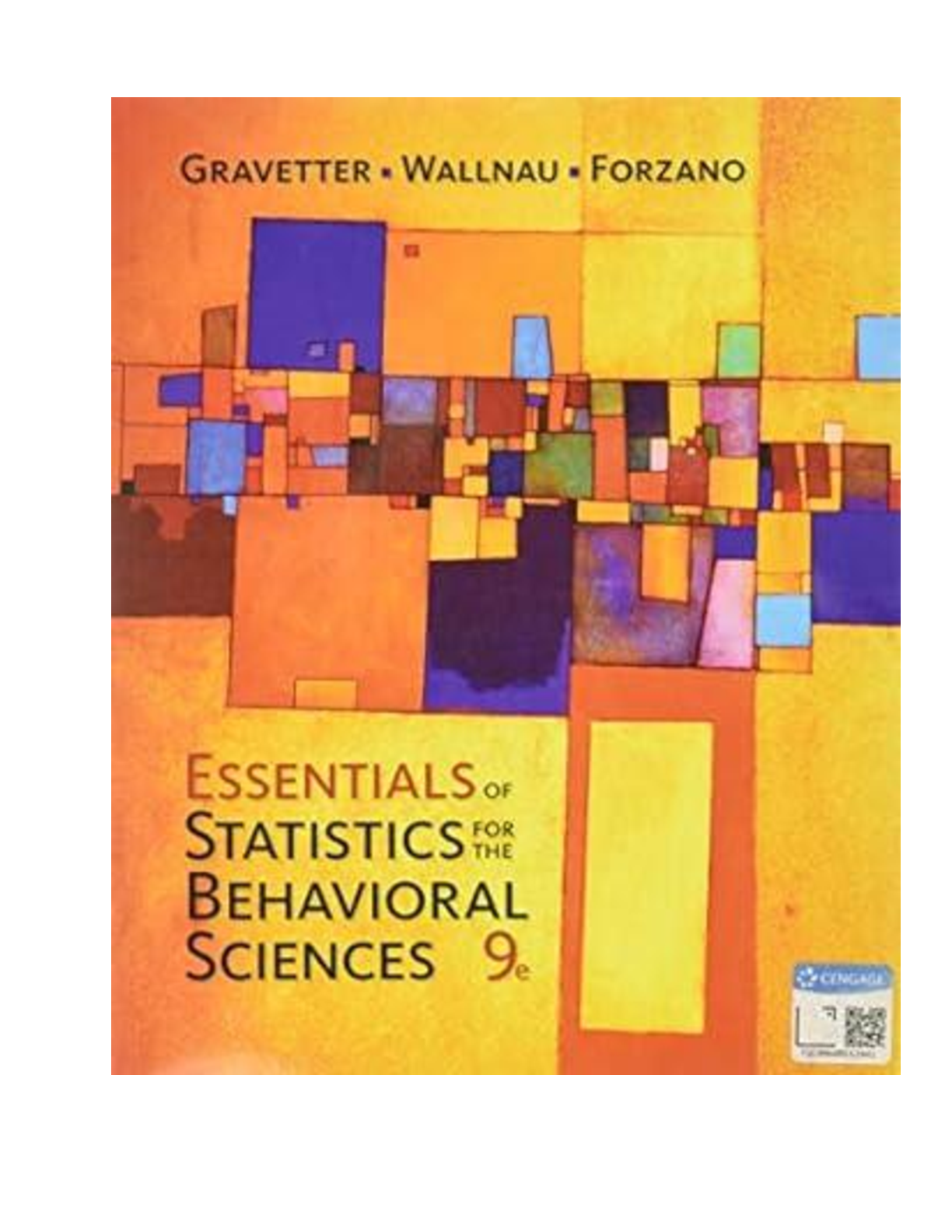Marketing Research, 9th Edition By Alvin Burns, Ann Veeck (eBook PDF)
Document Content and Description Below
Marketing Research Brief Contents Contents Preface New To This Edition Solving Teaching and Learning Challenges Developing Employability Skills Instructor Teaching Resources About the Authors ... Marketing Research 1 Introduction to Marketing Research Learning Objectives 1-1 Marketing Research Is Part of Marketing The Philosophy of the Marketing Concept Guides Managers’ Decisions Creating the “Right” Marketing Strategy 1-2 What Is Marketing Research? Is It Marketing Research or Market Research? The Function of Marketing Research 1-3 What Are the Uses of Marketing Research? Identifying Market Opportunities and Problems Generating, Refining, and Evaluating Potential Marketing Actions Selecting Target Markets Product Research Pricing Research Promotion Research Distribution Research Monitoring Marketing Performance Improving Marketing as a Process Marketing Research is Sometimes Wrong 1-4 The Marketing Information System Components of an MIS Internal Reports System Marketing Intelligence System Marketing Decision Support System (DSS) Marketing Research System 1-5 Job Skills Summary Key Terms Review Questions/Applications Endnotes 2 The Marketing Research Industry Learning Objectives 2-1 Evolution of an Industry Earliest Known Studies Why Did the Industry Grow? The 20th Century Led to a “Mature Industry” Marketing Research in the 21St Century 2-2 Who Conducts Marketing Research? Client-Side Marketing Research Supply-Side Marketing Research 2-3 The Industry Structure Firm Size by Revenue Types of Firms and Their Specialties Industry Performance 2-4 Challenges to the Marketing Research Industry The Need to Incorporate Innovative and Evolving Sources of Data and Methods The Need to Effectively Communicate Insights The Need to Hire Talented and Skilled Employees 2-5 Industry Initiatives Best Practices Maintaining Public Credibility of Research Monitoring Industry Trends Improving Ethical Conduct 2-6 Industry Standards and Ethics Certification of Qualified Research Professionals Continuing Education 2-7 A Career in Marketing Research Where You’ve Been and Where You’re Headed! Summary Key Terms Review Questions/Applications Endnotes 3 The Marketing Research Process and Defining the Problem and Research Objectives Learning Objectives 3-1 The Marketing Research Process The 11-Step Process Caveats to a Step-By-Step Process Why 11 Steps? Not All Studies Use All 11 Steps Steps Are Not Always Followed in Order Introducing “Where We Are” Step 1: Establish the Need for Marketing Research The Information Is Already Available The Timing Is Wrong Costs Outweigh the Value Step 2: Define the Problem Step 3: Establish Research Objectives Step 4: Determine Research Design Step 5: Identify Information Types and Sources Step 6: Determine Methods of Accessing Data Step 7: Design Data Collection Forms Step 8: Determine the Sample Plan and Size Step 9: Collect Data Step 10: Analyze Data Step 11: Communicate the Insights 3-2 Defining the Problem 1. Recognize the Problem Failure to Meet an Objective Identification of an Opportunity 2. Understand the Background of the Problem Conduct a Situation Analysis Clarify the Symptoms Determine the Probable Causes of the Symptom(s) 3. Determine the Decision Alternatives 4. Formulate the Problem Statement 3-3 Research Objectives Using Hypotheses Defining Constructs 3-4 Action Standards Impediments to Problem Definition 3-5 The Marketing Research Proposal Ethical Issues and the Research Proposal Summary Key Terms Review Questions/Applications Endnotes 4 Research Design Learning Objectives 4-1 Research Design Why Is Knowledge of Research Design Important? 4-2 Three Types of Research Design Research Design: A Caution 4-3 Exploratory Research Uses of Exploratory Research Gain Background Information Define Terms Clarify Problems and Hypotheses Establish Research Priorities Methods of Conducting Exploratory Research Secondary Data Analysis Experience surveys Case Analysis Focus Groups 4-4 Descriptive Research Classification of Descriptive Research Studies 4-5 Causal Research Experiments Experimental Design Before-After Testing A/B Testing How Valid Are Experiments? Types of Experiments 4-6 Test Marketing Types of Test Markets Standard Test Market Controlled Test Markets Simulated Test Markets Selecting Test-Market Regions Pros and Cons of Test Marketing Summary Key Terms Review Questions/Applications Endnotes 5 Secondary Data and Packaged Information Learning Objectives 5-1 Big Data 5-2 Primary versus Secondary Data Uses Of Secondary Data 5-3 Classification of Secondary Data Internal Secondary Data External Secondary Data Published Sources Official Statistics Data Aggregators 5-4 Advantages and Disadvantages of Secondary Data Advantages of Secondary Data Disadvantages of Secondary Data Incompatible Reporting Units Mismatched Measurement Units Unusable Class Definitions Outdated Data 5-5 Evaluating Secondary Data What Was the Purpose of the Study? Who Collected the Information? What Information was Collected? How was the Information Obtained? How Consistent is the Information with Other Information? 5-6 What Is Packaged Information? Syndicated Data Packaged Services 5-7 Advantages and Disadvantages of Packaged Information Syndicated Data Packaged Services 5-8 Applications of Packaged Information Measuring Consumer Attitudes and Opinions Identitying Segments Monitoring Media Usage and Promotion Effectiveness Tracking Sales 5-9 Digital Tracking Data 5-10 Social Media Data Types Of Social Media Information Reviews Tips New Uses Competitor News Advantages and Disadvantages of Social Media Data Tools to Monitor Social Media 5-11 Internet of Things 5-12 Big Data and Ethics Drill Bits, Inc. Summary Key Terms Review Questions/Applications Endnotes 6 Qualitative Research Techniques Learning Objectives 6-1 Quantitative, Qualitative, and Mixed Methods Research Types of Mixed Methods 6-2 Observation Techniques Types of Observation Direct Versus Indirect Covert Versus Overt Structured Versus Unstructured In Situ Versus Invented Appropriate Conditions for the Use of Observation Advantages of Observational Data Limitations of Observational Data 6-3 Focus Groups How Focus Groups Work Online Focus Groups Operational Aspects of Traditional Focus Groups How Many People Should Be in a Focus Group? Who Should Be in the Focus Group? How Many Focus Groups Should Be Conducted? How Should Focus Group Participants Be Recruited and Selected? Where Should a Focus Group Meet? When Should the Moderator Become Involved in the Research Project? How Are Focus Group Results Used? What Other Benefits Do Focus Groups Offer? Advantages of Focus Groups Disadvantages of Focus Groups When Should Focus Groups Be Used? When Should Focus Groups Not Be Used? Some Objectives of Focus Groups 6-4 Ethnographic Research Mobile Ethnography Netnography 6-5 Marketing Research Online Communities 6-6 Other Qualitative Research Techniques In-Depth Interviews Protocol Analysis Projective Techniques Word-Association Test Sentence-Completion Test Picture Test Cartoon or Balloon Test Role-Playing Activity Neuromarketing Neuroimaging Eye Tracking Facial Coding The Controversy Still More Qualitative Techniques 6-7 The Analysis of Qualitative Data Steps for Analyzing Qualitative Data Step 1. Organize the data. Step 2. Get to know the data. Step 3. Categorize the data. Step 4. Identify themes. Step 5. Identify substantiating examples of themes. Step 6. Communicate insights. Using Electronic Tools To Analyze Qualitative Data Summary Key Terms Review Questions/Applications Endnotes 7 Evaluating Survey Data Collection Methods Learning Objectives 7-1 Advantages of Surveys 7-2 Modes of Data Collection Data Collection and Impact of Technology Person-Administered Surveys Advantages of Person-Administered Surveys 1. Feedback 2. Rapport 3. Quality Control 4. Adaptability Disadvantages of Person-Administered Surveys 1. Humans Make Errors 2. Slow Speed 3. High Cost 4. Interview Evaluation Apprehension Computer-Assisted, Person-Administered Surveys Advantages of Computer-Assisted Surveys 1. Speed 2. Relatively Error-Free Interviews 3. Use of Images and Audiovisuals 4. Immediate Capture of Data Disadvantages of Computer-Assisted Surveys 1. Technical Skills May Be Required 2. Setup Costs Can Be High Self-Administered Surveys Advantages of Self-Administered Surveys 1. Reduced Cost 2. Respondent Control 3. Reduced Interview Evaluation Apprehension Disadvantages of Self-Administered Surveys 1. Respondent Control 2. Lack of Monitoring 3. High Questionnaire Requirements Computer-Administered Surveys Advantages of Computer-Administered Surveys 1. Many User-Friendly Features 2. Highly Efficient 3. Reduction of Interview Evaluation Concern in Respondents Disadvantage of Computer-Administered Surveys Require Computer-Literate and Internet-Connected Respondents Respondent Misrepresentation Mixed-Mode Surveys Advantage of Mixed-Mode Surveys Multiple Avenues to Achieve Data Collection Goal Disadvantages of Mixed-Mode Surveys 1. The Survey Mode May Affect Response 2. Additional Complexity 7-3 Descriptions of Data Collection Methods Person-Administered/Computer-Assisted Interviews In-Home Surveys Mall-Intercept Surveys In-Office Surveys Telephone Surveys Computer-Administered Interviews Fully Automated Survey Online Surveys Self-Administered Surveys (Without Computer Presence) Group Self-Administered Survey Drop-Off Survey Mail Survey 7-4 Working with a Panel Company Advantages of Using A Panel Company 1. Fast Turnaround 2. High Quality 3. Database Information 4. Targeted Respondents 5. Integrated Features Disadvantages of Using A Panel Company 1. Not random samples 2. Overused respondents 3. Cost Top Panel Companies 7-5 Choosing the Survey Method How Fast is the Data Collection? How Much Does the Data Collection Cost? How Good is the Data Quality? Other Considerations Summary Key Terms Review Questions/Applications Endnotes 8 Understanding Measurement, Developing Questions, and Designing the Questionnaire Learning Objectives 8-1 Basic Measurement Concepts 8-2 Types of Measures Nominal Measures Ordinal Measures Scale Measures 8-3 Interval Scales Commonly Used in Marketing Research The Likert Scale The Semantic Differential Scale The Stapel Scale Slider Scales Two Issues With Interval Scales Used In Marketing Research The Scale Should Fit The Construct 8-4 Reliability and Validity of Measurements 8-5 Designing a Questionnaire The Questionnaire Design Process 8-6 Developing Questions Four Do’s of Question Wording The Question Should Be Focused on a Single Issue or Topic The Question Should Be Brief The Question Should Be Grammatically Simple The Question Should Be Crystal Clear Four Do Not’s of Question Wording Do Not “Lead” the Respondent to a Particular Answer Do Not Use “Loaded” Wording or Phrasing Do Not Use a “Double-Barreled” Question Do Not Use Words That Overstate the Case 8-7 Questionnaire Organization The Introduction Who Is Doing the Survey? What Is the Survey About? How Did You Select Me? Motivate Me to Participate Am I Qualified to Take Part? Question Flow 8-8 Computer-Assisted Questionnaire Design Question Creation Skip and Display Logic Data Collection and Creation of Data Files Ready-Made Respondents Data Analysis, Graphs, and Downloading Data 8-9 Finalize the Questionnaire Coding The Questionnaire Pretesting The Questionnaire Moe’s Tortilla Wraps Research Objectives for Survey of Users of Moe’s Tortilla Wraps in San Diego, California Research Objectives for Survey of Nonusers of Moe’s Tortilla Wraps in San Diego, California Research Objectives for Survey of Potential Users of Moe’s Tortilla Wraps in San Francisco, Sacramento, and Los Angeles, California Summary Key Terms Review Questions/Applications Endnotes 9 Selecting the Sample Learning Objectives 9-1 Basic Concepts in Samples and Sampling Population Census Sample and Sample Unit Sample Frame and Sample Frame Error Sampling Error 9-2 Why Take a Sample? 9-3 Probability Versus Nonprobability Sampling Methods 9-4 Probability Sampling Methods Simple Random Sampling The Random Device Method The Random Numbers Method Advantages and Disadvantages of Simple Random Sampling Simple Random Sampling Used in Practice Systematic Sampling Why Systematic Sampling Is “Fair” Disadvantage of Systematic Sampling Cluster Sampling Area Sampling as a Form of Cluster Sampling Disadvantage of Cluster (Area) Sampling Stratified Sampling Working with Skewed Populations Accuracy of Stratified Sampling How to Apply Stratified Sampling 9-5 Nonprobability Sampling Methods Convenience Samples Chain Referral Samples Purposive Samples Quota Samples 9-6 Online Sampling Techniques Online Panel Samples River Samples Email List Samples 9-7 Developing a Sample Plan Summary Key Terms Review Questions/Applications Endnotes 10 Determining the Size of a Sample Learning Objectives 10-1 Sample Size Axioms 10-2 The Confidence Interval Method of Determining Sample Size Sample Size and Accuracy P and Q: The Concept of Variability The Concept of a Confidence Interval How Population Size (N) Affects Sample Size 10-3 The Sample Size Formula Determining Sample Size Via The Confidence Interval Formula Variability: p × q Acceptable Margin of Sample Error: e Level of Confidence: z 10-4 Practical Considerations in Sample Size Determination How to Estimate Variability in the Population How to Determine the Amount of Acceptable Sample Error How to Decide on the Level of Confidence How to Balance Sample Size with the Cost of Data Collection 10-5 Other Methods of Sample Size Determination Arbitrary “Percent Rule of Thumb” Sample Size Conventional Sample Size Specification “Credibility Interval” Approach to Sample Size Statistical Analysis Requirements in Sample Size Specification Cost Basis of Sample Size Specification 10-6 Three Special Sample Size Determination Situations Sampling from Small Populations Sample Size Using Nonprobability Sampling Sampling from Panels Niagara Falls Tourism Association Questions Summary Key Terms Review Questions/Applications Endnotes 11 Dealing with Fieldwork and Data Quality Issues Learning Objectives 11-1 Data Collection and Nonsampling Error 11-2 Possible Errors in Field Data Collection Intentional Fieldworker Errors Unintentional Fieldworker Errors Intentional Respondent Errors Unintentional Respondent Errors 11-3 Field Data Collection Quality Controls Control of Intentional Fieldworker Error Control of Unintentional Fieldworker Error Control of Intentional Respondent Error Control of Unintentional Respondent Error Final Comment on the Control of Data Collection Errors 11-4 Nonresponse Error Refusals to Participate in the Survey Break-offs During the Interview Refusals to Answer Specific Questions (Item Omission) What is a Completed Interview? Measuring Response Rate in Surveys 11-5 Ways Panel Companies Control Error 11-6 Dataset, Coding Data, and the Data Code Book 11-7 Data Quality Issues What to Look for in Raw Data Inspection Incomplete Response Nonresponses to Specific Questions (Item Omissions) Yea- or Nay-Saying Patterns Middle-of-the-Road Patterns Other Data Quality Problems How to Handle Data Quality Issues Summary Key Terms Review Questions/Applications Endnotes 12 Using Descriptive Analysis, Performing Population Estimates, and Testing Hypotheses Learning Objectives 12-1 Types of Statistical Analyses Used in Marketing Research Descriptive Analysis Inference Analysis Difference Analysis Association Analysis Relationships Analysis 12-2 Understanding Descriptive Analysis Measures of Central Tendency: Summarizing the “Typical” Respondent Mode Median Mean Measures of Variability: Relating the Diversity of Respondents Frequency and Percentage Distribution Range Standard Deviation 12-3 When to Use Each Descriptive Analysis Measure 12-4 The Auto Concepts Survey: Obtaining Descriptive Statistics with SPSS Integrated Case Use SPSS to Open up and Use the Auto Concepts Dataset Obtaining a Frequency Distribution and the Mode with SPSS Finding the Median with SPSS Finding the Mean, Range, and Standard Deviation with SPSS 12-5 Reporting Descriptive Statistics to Clients Reporting Scale Data (Ratio and Interval Scales) Reporting Nominal or Categorical Data 12-6 Statistical Inference: Sample Statistics and Population Parameters 12-7 Parameter Estimation: Estimating the Population Percentage or Mean Sample Statistic Standard Error Confidence Interval How to Interpret an Estimated Population Mean or Percentage Range 12-8 The Auto Concepts Survey: How to Obtain and Use a Confidence Interval for a Mean with SPSS 12-9 Reporting Confidence Intervals to Clients 12-10 Hypothesis Tests Test of the Hypothesized Population Parameter Value Auto Concepts: How to Use SPSS to Test a Hypothesis for a Mean 12-11 Reporting Hypothesis Tests to Clients Summary Key Terms Review Questions/Applications Endnotes 13 Implementing Basic Differences Tests Learning Objectives 13-1 Why Differences Are Important 13-2 Small Sample Sizes: The Use of a t Test or z Test and How SPSS Eliminates the Worry 13-3 Testing for Significant Differences Between Two Groups Differences Between Percentages with two Groups (Independent Samples) How to Use SPSS for Differences Between Percentages of Two Groups Differences Between Means with Two Groups (Independent Samples) 13-4 Testing for Significant Differences in Means Among More Than Two Groups: Analysis of Variance Basics of Analysis of Variance Post Hoc Tests: Detect Statistically Significant Differences Among Group Means Interpreting Anova (Analysis of Variance) 13-5 Reporting Group Differences Tests to Clients 13-6 Differences Between Two Means Within the Same Sample (Paired Sample) 13-7 Null Hypotheses for Differences Tests Summary Summary Key Terms Review Questions/Applications Endnotes 14 Making Use of Associations Tests Learning Objectives 14-1 Types of Relationships (Associations) Between Two Variables Linear and Curvilinear Relationships Monotonic Relationships Nonmonotonic Relationships 14-2 Characterizing Relationships Between Variables Presence Pattern Strength of Association 14-3 Correlation Coefficients and Covariation Rules of Thumb for Correlation Strength The Correlation Sign: The Direction of the Relationship Visualizing Covariation Using Scatter Diagrams 14-4 The Pearson Product Moment Correlation Coefficient 14-5 Reporting Correlation Findings to Clients 14-6 Cross-Tabulations Cross-Tabulation Analysis Types of Frequencies and Percentages in a Cross-Tabulation Table 14-7 Chi-Square Analysis Observed and Expected Frequencies The Computed χ2 Value The Chi-Square Distribution How to Interpret a Chi-Square Result 14-8 Chi-Square Test of Proportions: A Useful Variation of Cross-Tabulation Analysis 14-9 Communicating Cross-Tabulation Insights to Clients: Use Data Visualization 14-10 Special Considerations In Association Procedures Summary Key Terms Review Questions/Applications Endnotes 15 Understanding Regression Analysis Basics Learning Objectives 15-1 Bivariate Linear Regression Analysis Basic Concepts in Regression Analysis Independent and Dependent Variables Computing the Slope and the Intercept How to Improve a Regression Analysis Finding 15-2 Multiple Regression Analysis An Underlying Conceptual Model Multiple Regression Analysis Described Basic Assumptions in Multiple Regression “Trimming” the Regression for Significant Findings 15-3 Special Uses of Multiple Regression Analysis Using a “Dummy” Independent Variable Using Standardized Betas to Compare the Importance of Independent Variables Using Multiple Regression as a Screening Device Interpreting the Findings of Multiple Regression Analysis 15-4 Stepwise Multiple Regression How to Do Stepwise Multiple Regression with SPSS Step-by-Step Summary of How to Perform Multiple Regression Analysis 15-5 Warnings Regarding Multiple Regression Analysis 15-6 Communicating Regression Analysis Insights to Clients Alpha Airlines Summary Key Terms Review Questions/Applications Endnotes 16 Communicating Insights Learning Objectives 16-1 Characteristics of Effective Communication Accuracy Clarity Memorability Actionability Style 16-2 Avoid Plagiarism! 16-3 Videos, Infographics, and Immersion Techniques Videos Infographics Immersion Techniques 16-4 The Traditional Marketing Research Report 16-5 Know Your Audience 16-6 Elements of the Marketing Research Report Front Matter Title Page Letter of Authorization Letter/Memo of Transmittal Table of Contents List of Illustrations Abstract/Executive Summary Body Introduction Research Objectives Method Method or Methodology? Results Limitations Conclusions and Recommendations End Matter 16-7 Guidelines and Principles for the Written Report Headings and Subheadings Visuals Style 16-8 Using Visuals: Tables and Figures Tables Pie Charts Bar Charts Line Graphs Flow Diagrams Producing an Appropriate Visual 16-9 Presenting Your Research Orally 16-10 Data Visualization Tools and Dashboards 16-11 Disseminating Insights Throughout an Organization Summary Key Terms Review Questions/Applications Endnotes Name Index [Show More]
Last updated: 1 year ago
Preview 1 out of 600 pages

Reviews( 0 )
Document information
Connected school, study & course
About the document
Uploaded On
Dec 23, 2022
Number of pages
600
Written in
Additional information
This document has been written for:
Uploaded
Dec 23, 2022
Downloads
0
Views
47






































